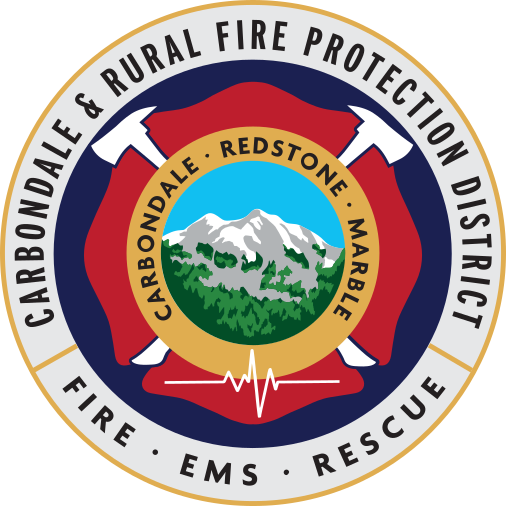The Essential Guide to Carbon Monoxide Safety in Your Home
By admin Published January 12, 2024

Carbon monoxide (CO) is often called the ‘silent killer’ – odorless, colorless, and undetectable without the right equipment. Understanding and managing carbon monoxide risk is essential for every household as a vital component of home safety. At Carbondale & Rural Fire Protection District, our focus extends beyond responding to emergencies; we are committed to educating you on the dangers of CO and providing practical strategies to ensure safety in your home. This guide explains what carbon monoxide is, and by following these simple yet effective safety measures, you can significantly reduce the risk of CO poisoning, ensuring a safer environment for your family.
Understanding Carbon Monoxide and Its Sources
Understanding carbon monoxide (CO) and its common sources is the first step in safeguarding your home against this invisible threat. Here’s what you need to know:
- What is Carbon Monoxide? CO is a poisonous gas produced by the incomplete burning of various fuels, including natural gas, gasoline, wood, coal, and oil. It is undetectable by human senses, making it particularly dangerous.
- Common Household Sources:
- Heating Systems: Faulty or improperly vented furnaces, boilers, and water heaters can emit CO.
- Cooking Appliances: Gas stoves and ovens can produce CO if not properly ventilated.
- Generators and Engines: Running a car or a generator in an enclosed space like a garage can quickly lead to CO buildup.
- Fireplaces and Wood Stoves: Incomplete combustion in fireplaces and wood stoves can release CO into your home.
- Blocked Chimneys or Flues: Blocked or damaged chimneys can prevent CO from escaping, causing it to accumulate indoors.
Understanding these sources is crucial in implementing preventive measures to keep your home safe from CO poisoning.
Preventing Carbon Monoxide Poisoning
Preventing carbon monoxide poisoning is about being proactive and vigilant with your home safety measures. Here are key steps you can take:
- Ensure Proper Ventilation: Make sure that all fuel-burning appliances have adequate ventilation to the outside to prevent CO buildup.
- Regular Maintenance of Appliances: Have a professional inspect and service your heating system, water heater, and any other appliances that use gas, oil, or coal annually.
- Safe Use of Generators and Engines:
- Never use a generator inside your home, garage, or less than 20 feet from any window, door, or vent.
- Avoid running vehicles inside a garage attached to your house, even with the door open.
- Install Carbon Monoxide Detectors: Place CO detectors on every level of your home, especially near sleeping areas, to alert you if CO levels become dangerous.
- Be Cautious with Fireplaces and Wood Stoves:
- Have your chimney checked and cleaned every year.
- Ensure proper ventilation when using these heating sources.
By following these guidelines, you can significantly reduce the risk of CO poisoning in your home, ensuring the safety and well-being of your family
Recognizing and Responding to CO Poisoning
Carbon monoxide poisoning can be elusive due to its odorless and colorless nature, but recognizing the signs and knowing how to respond save your life. Here’s what you need to be aware of:
Signs of Carbon Monoxide Poisoning:
- Headache
- Dizziness
- Weakness
- Nausea or vomiting
- Shortness of breath
- Confusion
- Blurred vision
- Loss of consciousness
If you or anyone in your home exhibits these symptoms and you suspect CO poisoning:
Immediate Steps to Take:
- Immediately evacuate the affected individual to fresh air outside.
- Call 9-1-1
- Do not re-enter the premises until it has been deemed safe by emergency responders.
- Seek medical attention, even if symptoms are mild. CO poisoning can quickly become life-threatening.
Awareness and quick action are crucial in handling potential CO poisoning incidents. Your prompt response can prevent severe health consequences.
The Role of CO Detectors in Home Safety
Carbon monoxide detectors play a critical role in home safety, serving as an early warning system against CO poisoning. Here’s what you need to know about them:
- Importance of CO Detectors: CO detectors monitor the levels of carbon monoxide in your home and alert you before dangerous levels are reached, providing critical time to safely evacuate.
- Installation Guidelines:
- Install CO detectors on every level of your home, including the basement.
- Place them near sleeping areas to ensure alarms can be heard if they go off at night.
- Follow manufacturer instructions for proper placement.
- Maintenance Tips:
- Test your CO detectors monthly to ensure they are working correctly.
- Replace batteries at least once a year or as recommended by the manufacturer.
- Replace the CO detector itself every 5-7 years or as specified by the manufacturer.
Implementing and maintaining CO detectors can significantly enhance your home’s safety, providing peace of mind and protection against the dangers of carbon monoxide.
Embracing Safety and Vigilance Against CO
As we conclude our guide on carbon monoxide safety, it is clear that awareness, prevention, and preparedness are key to safeguarding your home and loved ones. Carbon monoxide, while invisible and odorless, can be effectively managed by understanding its sources, recognizing the signs of poisoning, and taking appropriate safety measures.
- Commit to Regular Maintenance: Consistent upkeep of household appliances and heating systems plays a critical role in preventing CO buildup.
- Stay Alert to Symptoms: Familiarize yourself and your family with the signs of CO poisoning for quick recognition and response.
- Invest in CO Detectors: These devices are not just gadgets; they are essential safety tools that provide a critical early warning.
At Carbondale & Rural Fire Protection District, our commitment extends beyond responding to emergencies. We are dedicated to educating and equipping our community with the knowledge to prevent such emergencies from occurring. We encourage you to implement these carbon monoxide safety measures and reach out to us for any support or information. Together, we can create a safer environment for all.
